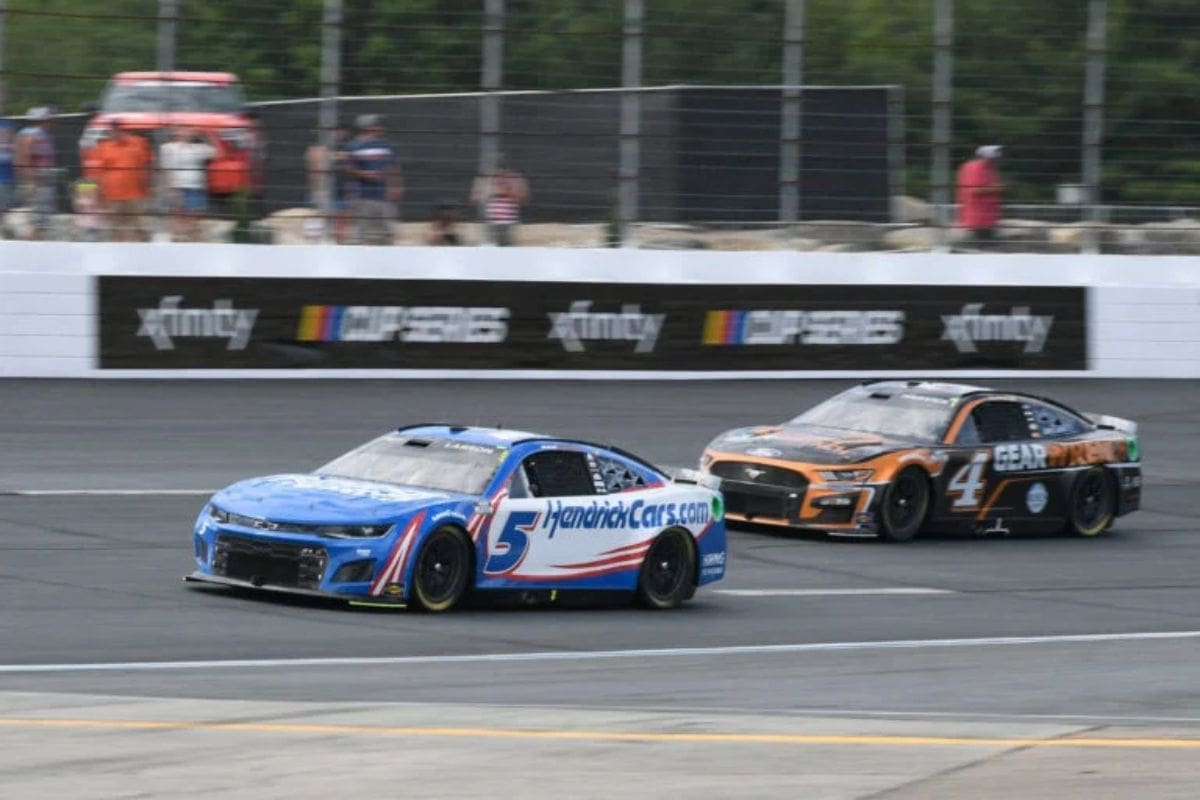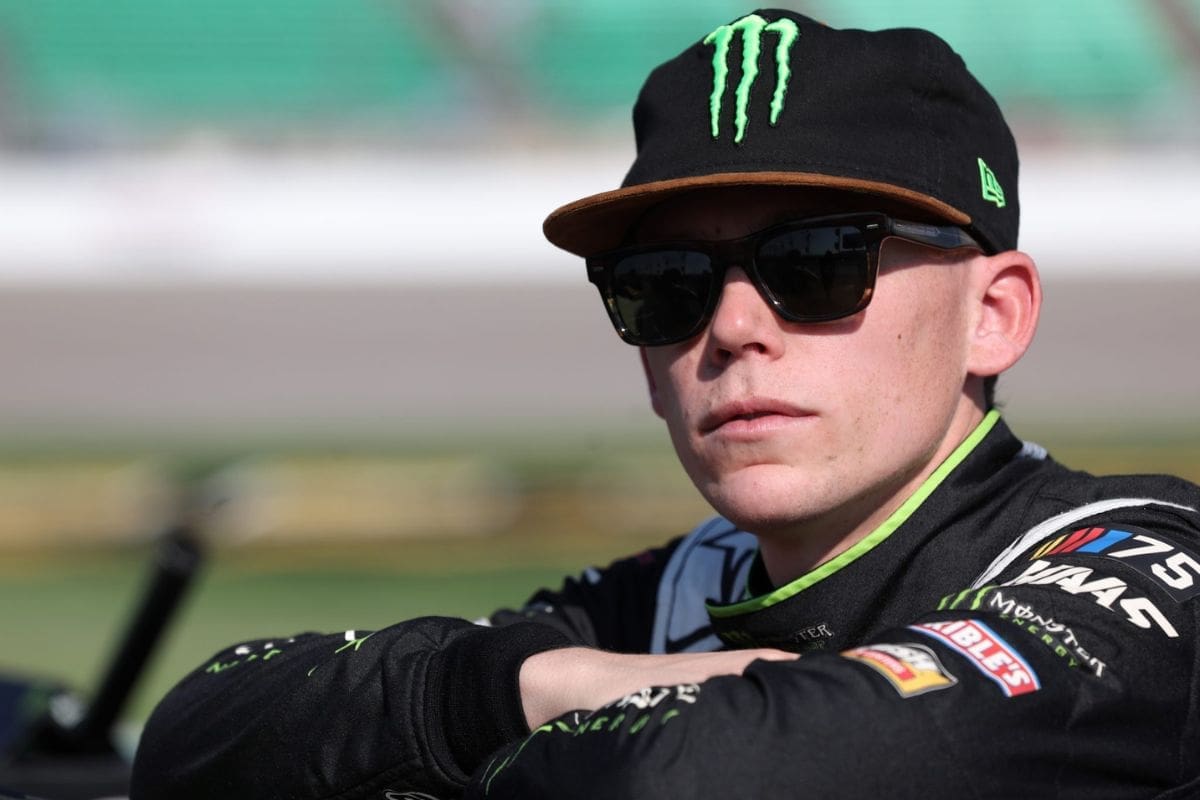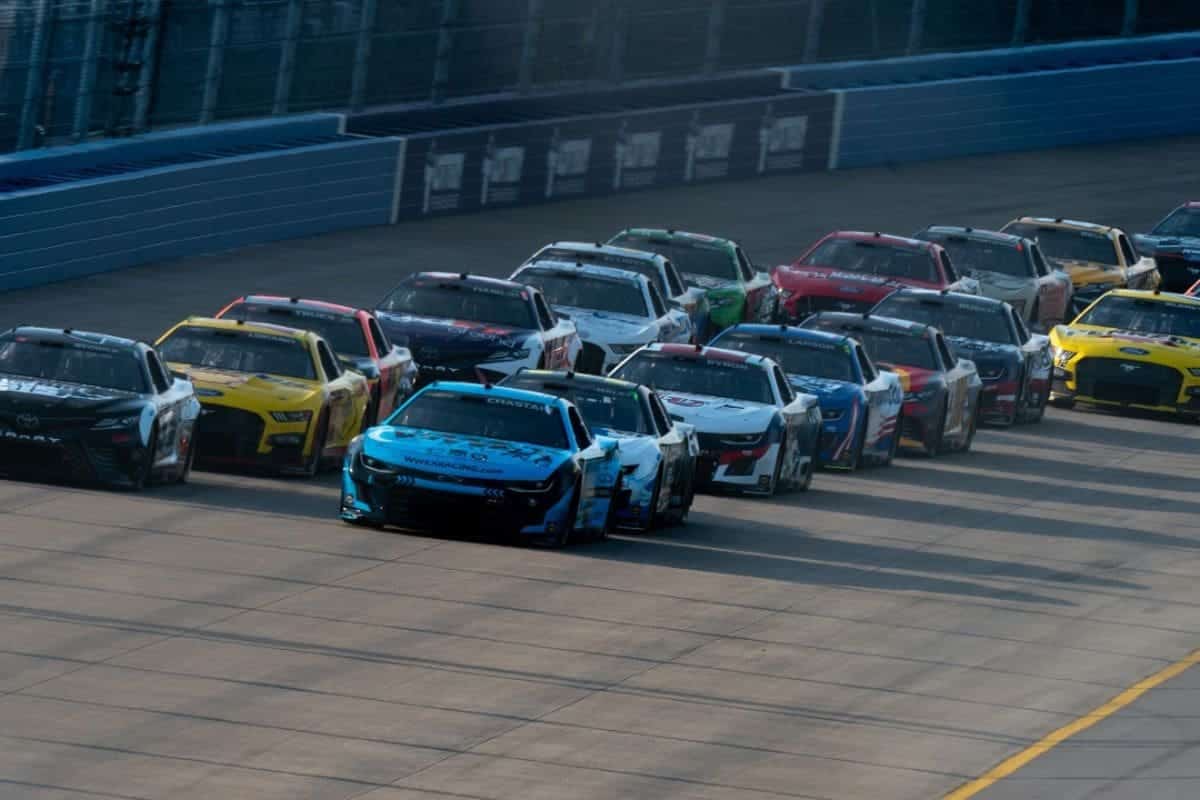SHR’s Struggling Star Boils in Nashville: At Nashville Superspeedway, SHR’s Riley Herbst faced significant adversity as scorching cockpit temperatures and equipment malfunctions tested his resilience. A cooling shirt failure in 128-degree heat risked severe dehydration and impaired performance. Quick action from his pit crew managed to address the cooling issue, but persistent challenges highlighted notable vulnerabilities. Herbst’s struggles raised critical questions about NASCAR’s safety protocols, especially in extreme conditions. With fans expressing concern over driver well-being and equipment reliability, these incidents highlight the need for robust contingency plans and updated regulations. Examine how these developments might shape future races and safety standards.
Key Highlights
- Riley Herbst faced critical radio malfunctions and lack of spotter guidance at Nashville Superspeedway.
- Herbst’s cooling shirt malfunctioned in 128-degree cockpit temperatures, risking heat exhaustion and dehydration.
- Efficient pit stop by Herbst’s crew diagnosed and repaired the cooling system, showcasing their expertise.
- Fans questioned NASCAR’s safety protocols and decision-making in extreme heat conditions.
- There is a call for updated regulations to ensure robust cooling systems and driver safety in high-temperature races.
Early Race Challenges
Riley Herbst’s race at Nashville Superspeedway was plagued by a series of early setbacks, beginning with a critical radio malfunction that severed his communication with his spotter. This unforeseen issue immediately put Herbst at a significant disadvantage, as spotter communication is crucial for maneuvering the fast-paced and often perilous conditions of a NASCAR race. Without the guidance of his spotter, Herbst was left to rely solely on his own instincts and the limited feedback from his crew via pit boards.
The radio malfunction was not the only challenge Herbst faced. Early in the race, his car sustained damage from debris scattered across the track. This debris damage further exacerbated his early race struggles, affecting the car’s aerodynamics and handling. The combination of impaired communication and a compromised vehicle created a perfect storm of adversity, testing both Herbst’s resilience and his ability to adapt under stress.
Driver frustration was palpable as Herbst grappled with these compounding issues. The lack of spotter communication meant he had to make split-second decisions without the usual stream of critical information about track conditions, competitor positions, and strategic adjustments. The debris damage, meanwhile, forced him to contend with a less responsive car, making it increasingly difficult to maintain competitive lap times.
Analyzing Herbst’s problem, it is clear that these early race challenges not only hindered his performance but also highlighted the significance of seamless communication and vehicle integrity in the high-stakes environment of NASCAR racing. Despite these hurdles, Herbst’s drive to persevere amidst adversity shows the relentless nature of motorsport competition, where even the smallest setbacks can have cascading effects on a driver’s race outcome.
Cooling System Failure
The malfunction of Herbst’s cooling shirt during the grueling Nashville heatwave represented a severe and immediate threat to his physical well-being, with cockpit temperatures soaring to a perilous 128 degrees Fahrenheit. This equipment malfunction raised critical questions regarding the reliability of his cooling system, which is vital for maintaining a driver’s endurance and focus in extreme conditions.
LAP 30: The issues for @rileyherbst keep piling up.
First he had radio issues with his spotter.
Then he hit debris.
Now the @StewartHaasRcng driver's cool shirt has failed. #NASCAR | #TNLottery250 | @XfinityRacing
— Seth Eggert (@SethEggert91) June 29, 2024
Analyzing the performance impact, it is evident that the cooling system failure severely compromised Herbst’s ability to maintain peak performance. As temperatures inside the car skyrocketed, the risk of heat exhaustion and dehydration became critical. These health risks not only jeopardized Herbst’s immediate safety but also threatened his race strategy.
The technical difficulties surrounding the cooling shirt malfunction necessitated a swift diagnosis and resolution. This incident highlighted the importance of having a robust contingency plan in place. A backup cooling system or alternative strategies should have been readily available to mitigate such risks, ensuring that the driver could continue to perform under extreme conditions.
In view of these challenges, the team’s oversight in not anticipating potential equipment failures becomes glaringly apparent. Ensuring the reliability of all gear, particularly in high-stress environments, is crucial. For Herbst, this incident was a stark reminder of the thin line between competitive edge and physical peril, emphasizing the need for rigorous equipment checks and fail-safes before race day.

Pit Stop Solution
Recognizing the critical nature of the cooling system malfunction, Herbst’s team executed a well-coordinated pit stop before the end of Stage 2 to address the issue and restore his ability to compete effectively. This decisive action highlighted the crew’s adept understanding of race strategy and their remarkable ability to perform under stress.
The pit crew’s intervention was nothing short of a masterclass in efficiency and teamwork. With the clock ticking, they delivered a quick fix that balanced speed with precision, ensuring minimal time lost on the track. The pit stop can be dissected into three vital actions:
- Rapid Diagnostics: The crew quickly identified the overheating issue, pinpointing the exact component failure in the cooling system.
- Efficient Repairs: Armed with the necessary tools and replacement parts, the mechanics executed the repairs in record time, showcasing their expertise and preparedness.
- Strategic Timing: Conducting the pit stop before the end of Stage 2 was a calculated move, allowing Herbst to rejoin the race at a competitive pace without sacrificing crucial stage points.
The synchronized effort of the pit crew was a confirmation of their collective skills and highlighted the importance of a cohesive team effort. Each member played a critical role, from the jackman to the tire changers, contributing to an overall performance improvement that enabled Herbst to resume his race with renewed vigor.
In analyzing the events, it becomes evident that this pit stop was not just a routine maintenance action but a significant moment in the race. The strategic execution and rapid resolution of the cooling system issue showcased the team’s unwavering commitment to excellence and their profound impact on the race’s outcome.
Toyota-200-Starting-Lineup-1.jpg” alt=”SHR’s Struggling Star Boils in Nashville” width=”1200″ height=”800″ srcset=”https://slicksandsticks.com/wp-content/uploads/2024/06/Toyota-200-Starting-Lineup-1.jpg 1200w, https://slicksandsticks.com/wp-content/uploads/2024/06/Toyota-200-Starting-Lineup-1-300×200.jpg 300w, https://slicksandsticks.com/wp-content/uploads/2024/06/Toyota-200-Starting-Lineup-1-1024×683.jpg 1024w, https://slicksandsticks.com/wp-content/uploads/2024/06/Toyota-200-Starting-Lineup-1-768×512.jpg 768w, https://slicksandsticks.com/wp-content/uploads/2024/06/Toyota-200-Starting-Lineup-1-630×420.jpg 630w, https://slicksandsticks.com/wp-content/uploads/2024/06/Toyota-200-Starting-Lineup-1-150×100.jpg 150w, https://slicksandsticks.com/wp-content/uploads/2024/06/Toyota-200-Starting-Lineup-1-696×464.jpg 696w, https://slicksandsticks.com/wp-content/uploads/2024/06/Toyota-200-Starting-Lineup-1-1068×712.jpg 1068w” sizes=”auto, (max-width: 1200px) 100vw, 1200px” />
Driver’s Response
Amidst the grueling conditions of the Nashville race, Herbst articulated the intense physical strain caused by the heat and detailed the coping mechanisms employed to endure the suffocating environment inside the car. The driver’s resilience was put to the test as temperatures soared, making the car’s interior feel like a furnace. Herbst’s honest reflections on the race highlighted his mental toughness, a critical quality that allowed him to remain focused despite impaired vision and escalating discomfort.
Herbst’s description of his ordeal emphasized the physical strain inherent in such demanding race conditions. The heat inside the car not only challenged his endurance but also taxed his mental faculties. Nevertheless, he managed to persevere, leveraging team support to mitigate the adverse effects. Cold water and ice packs became vital tools in maintaining his concentration and preventing heat exhaustion.
“On the grid, it was making weird noise. It clunked a little, but I thought, What are we going to do? So we kept going, and I felt hotter and hotter. I made the executive decision to unplug it. That’s risky because you can’t plug it back in. So, that was a 100% decision. Stage 2 was the hardest. That’s when I got a little spotty vision, but cold water in the car and ice got us through.” – Herbst
Herbst’s experience emphasizes the symbiotic relationship between driver and team support. The crew’s efforts to provide timely hydration and cooling solutions were indispensable in managing the harsh race conditions. The race in Nashville thus became a proof of the driver’s resilience and the importance of a well-coordinated support system.
In analyzing Herbst’s response, it becomes evident that the physical strain and mental toughness required in such scenarios go hand-in-hand. His ability to adapt and endure, coupled with the steadfast support from his team, exemplifies the fortitude necessary to navigate the challenges of professional racing. This interplay between personal resilience and collective effort is what ultimately enables drivers to conquer the extreme conditions presented by races like Nashville.

Fan Reaction and Safety Concerns
Expressing growing unease, fans have voiced significant concerns regarding the extreme weather conditions and the sufficiency of NASCAR’s cooling equipment regulations. The sweltering heat in Nashville has prompted an outpouring of fan reactions, questioning not only the sport’s ability to guarantee driver well-being but also the adequacy of existing NASCAR regulations aimed at mitigating heat exhaustion.
“We’ve been putting people on the moon since the 60s and have self-driving cars but we still can’t produce a cool shirt that f***ing works”.
“Herbst is definitely going to go to the in-field care center after this”.
“Riley about to find out how it feels to be a lobster. Basically going to get halfway boiled”.
“oh yeah i couldn’t be a nascar driver i’d park the car immediately lmao”. – fans reaction
The intense scrutiny from fans hinges on crucial safety concerns, particularly as prolonged exposure to high temperatures can have severe implications for drivers. Fans argue that NASCAR’s current cooling equipment regulations are inadequate, highlighting several key issues:
- Insufficient Cooling Systems: Many fans believe the cooling systems mandated by NASCAR do not effectively counteract the extreme heat experienced during races, leaving drivers vulnerable to heat-related illnesses.
- Driver Well-Being: The health and safety of drivers are paramount, yet fans feel that NASCAR’s protocols do not adequately protect drivers from the physical toll of racing in such high temperatures, potentially compromising their performance and safety.
- Regulation Updates: There is a growing call for NASCAR to reassess and update its regulations to incorporate more robust cooling solutions. Fans suggest that continuous innovation and adaptation to evolving climatic conditions are crucial to safeguard driver well-being.
News in Brief: SHR’s Struggling Star Boils in Nashville
The incident involving SHR’s driver in Nashville highlights the critical importance of reliable cooling systems in high-performance motorsports.
The early race challenges and subsequent cooling system failure necessitated an urgent pit stop solution, which, while addressed, drew significant scrutiny from fans regarding NASCAR’s safety protocols.
This event emphasizes the need for continuous technological advancements and stringent safety measures to guarantee driver well-being and maintain the integrity of competitive racing.
ALSO READ: Dale Jr. Disappointed Over Homestead’s Potential Drop

